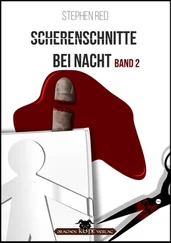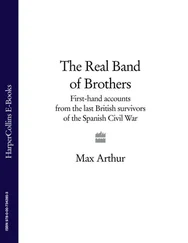When I wrote Pegasus Bridge, I decided not to show the manuscript to Maj. John Howard, the C.O. of D Company, Oxfordshire and Buckinghamshire Light Infantry, or any other of the thirty British gliderborne troops I had interviewed. I was working on a deadline that made it impossible to take up the months that would have been involved. The veterans had frequently contradicted each other on small points, and very occasionally on big ones. Not one of them would have accepted what I had written as entirely accurate, and I feared that, if they saw the manuscript, I'd be in for endless bickering over when this or that happened, or what happened, or why it happened.
I felt it was my task to make my best judgment on what was true, what had been misremembered, what had been exaggerated by the old soldiers telling their war stories, what acts of heroism had been played down by a man too modest to brag on himself.
In short, I felt that although it was their story, it was my book. John Howard was unhappy at being unable to suggest changes and corrections. Since the publication of Pegasus Bridge, he has convinced me that he was right, and I was wrong. Had I had time and allowed John and others to make corrections, criticisms, and suggestions, it would have been a more accurate and better book.
So I have circulated the manuscript of this book to the men of Easy Company. I have received a great deal of criticism, corrections, and suggestions in return. Winters and Lipton especially have gone through it line by line. This book is, then, very much a group effort. We do not pretend that this is the full history of the company, an impossibility given the vagaries of memory and the absence of testimony from men killed in the war or since deceased. But we do feel that, through our constant checking and rechecking, our phone calls and correspondence, our visits to the battle sites, we have come as close to the true story of Easy Company as possible.
It has been a memorable experience for me. I was ten years old when World War II ended. Like many other American men my age, I have always admired—nay, stood in awe of—the G.I.s. I thought that what they had done was beyond praise. I still do. To get to know so well a few of them from one of the most famous divisions of all, the Screaming Eagles, has been a privilege. It is my proud boast that they have made me an honorary member of the company. As I am also an honorary member of D Company of the Ox and Bucks, I've got both flanks covered. Truly my cup runs over.
Stephen E. Ambrose Eisenhowerplatz, Bay St. Louis October 1990-May 1991 The Cabin, Dunbar, Wisconsin May-September 1991
In 1992, the U. S. Congress authorized the building of the National D-Day Museum in New Orleans,
on the site where the Higgins Boats were constructed and tested. The Museum's mission is to remind the American people of the day when the fury of an aroused democracy was hurled against Nazi-occupied Europe, and to inspire future generations by showing that there is nothing this Republic cannot do when everyone gets on the team.
In addition to hands-on displays, a photographic gallery, weapons, uniforms, and other artifacts, the Museum will house an Archives that will hold all printed work on D-Day, plus the oral and written memoirs from participants in the battle that the Eisenhower Center at the University of New Orleans has been gathering since 1983. This is the largest collection of eyewitness accounts of a single battle in the world.
For information on how to become a Friend of the Museum, or to donate artifacts, please write the Eisenhower Center, University of New Orleans, New Orleans, LA, 70148.
ALSO BY STEPHEN E. AMBROSE
Upton and the Army Halleck: Lincoln's Chief of Staff
Ike's Spies: Eisenhower and the Espionage Establishment
Rise to Globalism: American Foreign Policy 1938-1970
Crazy Horse and Custer: The Parallel Lives of Two American Warriors
Eisenhower and Berlin, 1945 Duty, Honor, Country: A History of West Point
The Supreme Commander: The War Years of General Dwight D. Eisenhower
Eisenhower:
Soldier, General of the Army, President-Elect 1890-1952
Eisenhower: The President Pegasus Bridge: June 6, 1944
Nixon: The Education of a Politician 1913-1962
Nixon: The Triumph of a Politician 1962-1972
Eisenhower: Soldier and President
Nixon: Ruin and Recovery, 1973-1990



![Stephen Ambrose - Citizen Soldiers [Condensed]](/books/346737/stephen-ambrose-citizen-soldiers-condensed-thumb.webp)
![Stephan Orth - Behind Putin's Curtain - Friendships and Misadventures Inside Russia [aka Couchsurfing in Russia]](/books/415210/stephan-orth-behind-putin-s-curtain-friendships-a-thumb.webp)





